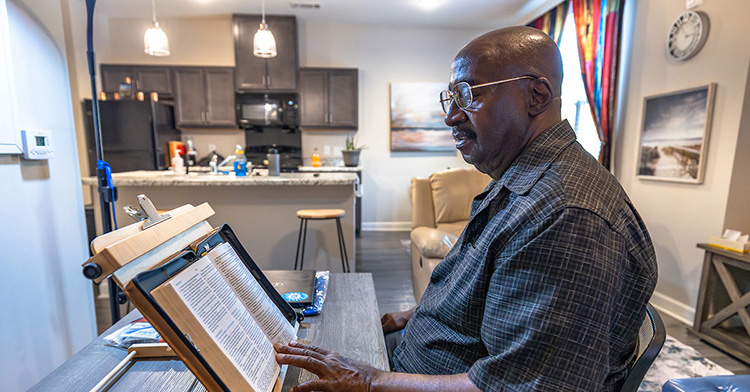Editor’s note: This is the fourth in a series of posts about the keys to leading change.
When Suzii Paynter, the recently elected chief executive at the Cooperative Baptist Fellowship, was growing up her dad bought a fast horse. In teaching the kids how to ride this beautiful animal, her dad explained the need to give space to the reins. He demonstrated that the kids should not “grasp” the reins as they did with the other horses. They should allow the reins to rest in their hands. The power was in the horse, not the reins.
Paynter told this story in her first address at the denomination’s annual meeting, the same day that attendees voted on a new organizational structure that Paynter will lead in implementing. She noted that the new organizational structure, developed over the last two years, was like the reins. It was important in providing guidance, but the power was not in the structure, it was in God and the work that God led them to do.
From Paynter’s first day on the job, she faced a difficult challenge. A few months ago, I argued that when institutions want to do new or better work, the last step is to reorganize. Yet Paynter comes into the work with a charge to finish a reorganization process that began three years earlier. Her childhood story puts the organizational issues in perspective. She invited everyone to hold lightly to the structures that they were creating. Not to focus on the organization but on God, the people and the work.
When I first went to work for a big organization, my mentor showed me the organizational chart and I asked questions about rank and scope of authority. He cautioned me to focus on the lines, not the boxes. How would I communicate and collaborate through the lines? What lines were missing that I needed to draw?
Because time is one of our most precious commodities, I have found it essential to prioritize those with whom I build working relationships. Looking inside and outside the organization, I identify those on whom my work depends and those who depend on me. What are the priorities for their work, and how do they intersect with my work? What information do they need to do their work, and how can I get it to them on time and in the most helpful form? How and when will they know what I need?
For example, in big institutions I have found that in addition to those who provide funding for the work, I most often depend on the human resources and financial management departments. I find folks in those departments who are interested in teaching me what they need and how to get what I need. In a congregation, I look for the individuals and committees whose decisions most impact the work. As a pastor, my congregation had 10 committees, but five of them made decisions on a regular basis that affected the congregation’s goals. I was much more proactive with those committees and their leaders.
One final lesson from Paynter’s father -- he did not teach the kids to ride horses on the fast horse.
When we are starting out in leadership, it is natural to grasp the reins and to want clarity about accountability and authority. But as one progresses to larger and larger responsibilities, the more important it is to create space for the reins, to let the spirit flow through the connections. If everyone is holding on tight to the structure, it is difficult to make the changes needed in this fast-paced world.











